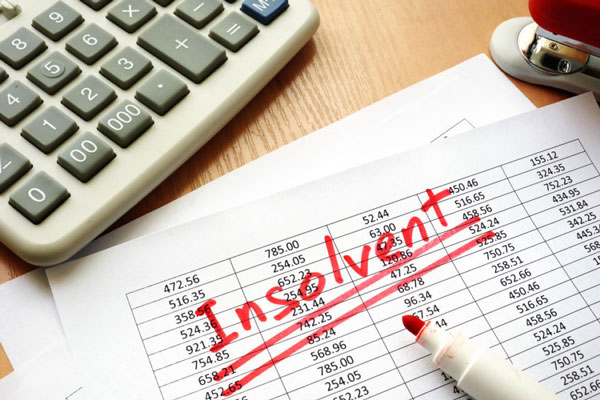In the United States, Article 507 of the Banking Law dictates the sequence in which a company's creditors must be paid after liquidation. In order to safeguard individuals having a direct stake in the liquidated group's resources, the process by which reimbursements are paid is quite strict.
An organization's assets are liquidated and distributed to creditors and other parties during a reorganization. All of its tangible belongings and equipment, as well as any remaining cash and proceeds from selling them, make up its assets. When a business cannot meet its financial commitments as they fall due, it is said to be incompetent and must undergo liquidation.
Liquidation: Assets Distribution in a Liquidation
There is a rigid procedure for dividing up the money after liquidation. If the bankruptcy administration runs out of money before paying the lowest priority debtors, those lenders won't get a refund. If the value of the secured drops below the loan amount, even the primary concern debtors may not get paid back in full.

Creditor Repayment Hierarchy in Liquidation
Fixed-Charge Secured Debtors
If a corporation has a lot of assets, the debtors who hold an ownership interest in the investments will be the first to get reimbursed. Financial institutions and other investment-based creditors that maintain a specified amount over a corporate asset are also instances of priority creditors to get paid first.
Once a fixed amount has been given to the creditor, your company will no longer be able to buy, sell, or otherwise deal with the item in question. Hence, plants, equipment, automobiles, and land are typical examples of fixed charges.
Because these resources are significant for organizations, and it is unlikely that they will be put up for sale in the ordinary course of commerce. Nevertheless, following the terms of the initial agreement, the disciplinarian or administrator may sell the asset if the business is liquidated to recover money.
Priority Creditors
Priority creditors get paid before others (known as unsecured creditors) if a company goes bankrupt. Creditors include workers or personnel owed up to £800 in unpaid or vacation pay. The British tax agency HMRC is included as well.
Floating Charge Secured Debtors
Assets liable to float instruments include inventory, WIP (work-in-progress), commodities, appliance fittings/fixtures, and other assets that are not entitled to a predefined charge.
In the ordinary course of business, assets like these might be put up for sale or transferred. Creditors holding floating charges are entitled to receive dividends from the firm's total assets (the balance remaining after costs have been deducted), diluting the mandated part.
The funds that were held back after the disposal of floating charge instruments. The dissolution's net price and the reduced number are examples of what is referred to as the "prescribed ones." This money is then used to improve the chances of creditors that have no security of being paid or collecting some portion of the debt they are owed.
Unsecured Debtors
Distributors, financial intermediaries, suppliers, consumers, and perhaps some employee disputes also fall under the category of "unsecured debt holders," which encompasses lending institutions and people that lend money without acquiring specified resources as security.
Investors
When a firm is liquidated, the investors/stockholders are the last category to be compensated for their investment. As a result of the fact that stockholders have assumed a financial risk by providing the firm with funding, they are not entitled to receive a dividend until every other class of creditors has been paid in full.
Factors Influencing Repayment of Creditors

The precedence of creditors in a liquidation procedure is based on several variables. This section provides a high-level summary of the most important considerations.
Classification: Secured/Unsecured
Secured creditors have a legal claim to the collateral the debtor uses to secure the loan. This claim is often established at the time of borrowing money and secured by the debtor's possession of the asset acquired or other personal property.
When to Reach Secured Status?
If you want to resolve this tension, the funding security is often labeled as a primary or second mortgage. The first mortgage claim on the assets takes precedence over that of a secondary lien. When determining the order of claims, the rule that the first to acquire a share wins is the most universal.
When to be Eligible for Priority Treatment?
In the event of bankruptcy, a claimant's priority creditor receives specialized treatment over unsecured creditors. Even though these credits may not have been backed by security or are entitled to claim possessions, they are prioritized throughout the liquidation process. Depending on the context, preferential credits might be categorized as a subset of unsecured creditors. The following are some examples of favored creditors:
- People who are working for the business. Employees who have not been paid their pay are given special consideration, even if they may not be legal owners of the firm.
- Damaged parties. When a debtor is sued, the plaintiff is typically given priority as a creditor until the case is resolved in court.
- Officials from the Internal Revenue Service and other taxing authorities. Claims against the government for taxes owed are given priority.
Cash Flow and Capital Structure
There are two methods for a business to get the money it needs to run. To begin with, it can seek funding from outside sources. Second, the company's equity structure can be maintained through debt financing. Liquidation procedures vary for debt and equity, as creditors and investors have different stakes in the firm's profits.
Difference Between Preferred and Common Stocks
In the context of a bankruptcy case, debtors have been treated very differently. Different types of stock (common, preferred, and many others) and their respective privileges will be spelled out in the specified policies and regulations of the firm. Preferred stockholders are usually given priority in the distribution of liquidation funds over common stockholders.



